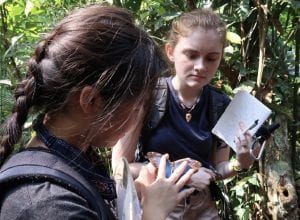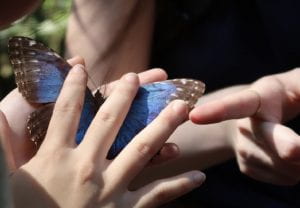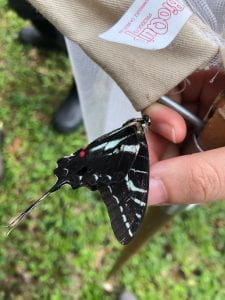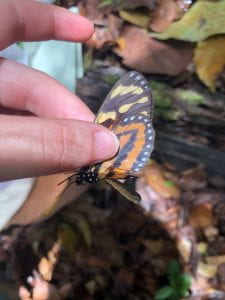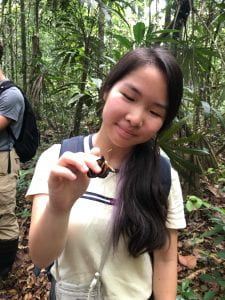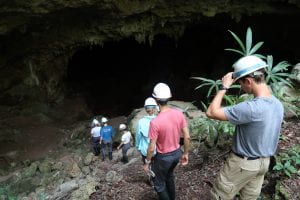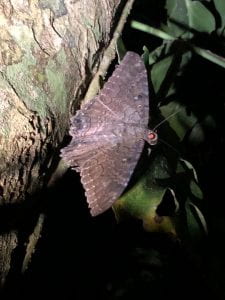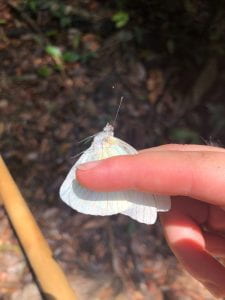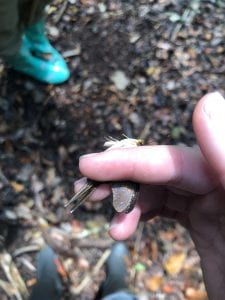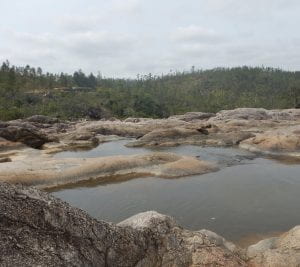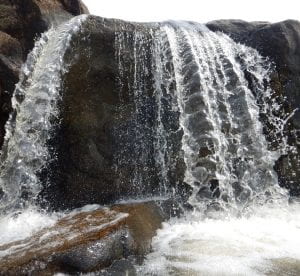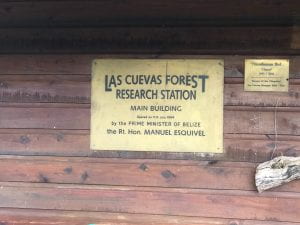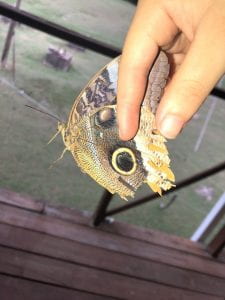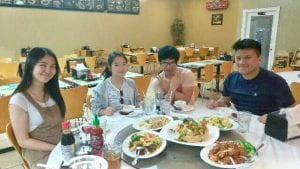6:00am breakfast as usual. In the morning, the class hiked up the Maya Trail to examine an area disturbed by a hurricane a few years ago. The damage was apparent in the tree fall, but also in the difference in species composition between the disturbed and undisturbed areas of the rainforest—most notably, cecropia trees inhabited the disturbed areas abundantly, but not the undisturbed areas. The class surveyed plant species in both disturbed and undisturbed areas of the rainforest along the Maya Trail.
On an exciting note, I finally caught a blue Morpho! The butterfly made the mistake of settling on a leaf too close to me and not darting away while it had the chance, thinking that its leaf-like underside camouflage would save it. This bad boy was rather large at a wingspan of around 13 cm (blue morphos can reach a wingspan of 20cm). These iconic rainforest species have an easily recognizable iridescent blue topside, but with wings closed (as butterflies have the tendency to perch), the brown underside with eyespots blends into the butterfly’s surroundings. Blue morphos are also incredibly adept flyers, making them difficult to catch both in flight and not.
Blue Morpho, Morpho peleides
That afternoon, the class returned to the hurricane-disturbed area along the Maya Trail to examine firsthand the ant-plant mutualism between cecropia trees and the Azteca Ants that inhabit and defend them.
That night, the class hiked up the PAINfully steep bird tower trail to the bird tower. Although the hike was hard and the sky was cloudy, the stunningly beautiful view from the bird tower was unparalleled. The class spent over an hour at the bird tower until the sun began to set. I sat with my feet dangling off of the edge of the bird tower and enjoyed the breeze. We returned to the research station in the dark, and the downhill hike back was much easier. We saw a cave, and nearly stepped on a jumping pit viper, and at one point we all turned off our headlamps and (surrounded by darkness) just listened to the rainforest sounds.
(From left to right) Keegan, Cassia, Michael, Me on top of the bird tower
The class ended the day with lectures on fungus, reptiles, beetles, and a lecture from yours truly on tropical parasites, diseases, and medicinal plants.

